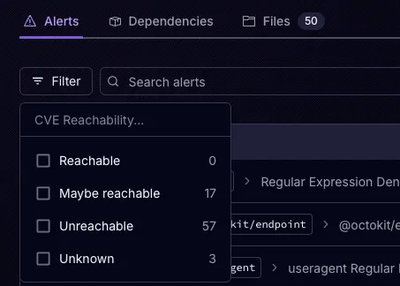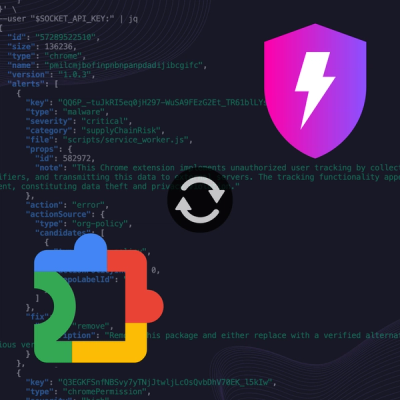
Product
Announcing Precomputed Reachability Analysis in Socket
Socket’s precomputed reachability slashes false positives by flagging up to 80% of vulnerabilities as irrelevant, with no setup and instant results.
github.com/model-collapse/vugu
Vugu is an experimental library for web UIs written in Go and targeting webassembly. Guide and docs at https://www.vugu.org. Godoc at https://godoc.org/github.com/vugu/vugu.
If you've ever wanted to write a UI not in JS but pure Go... and run it in your browser, right now... That (experimental;) future is here!
Introducing Vugu (pronounced /ˈvuː.ɡuː/), a VueJS-inspired library in Go targeting wasm.
No node. No JS. No npm. No node_modules folder competing with your music library for disk space.
.prop= syntax implemented, various cleanup, imports are deduplicated automatically now, started on nested component implementation and all of that craziness.<html> tag) now supported on component-refactor branch, updated CSS and JS support figured out and implementation in-progress Join the conversation: Gophers on Slack, channel #vugu
Get started: http://www.vugu.org/doc/start
Still a work in progress, but a lot of things are already functional. Some work really well.
<tag :prop='expr'>.<my-custom-component :prop='expr'>.It's built more like a library than a framework. While Vugu does do code generation for your .vugu component files, (and will even output a default main_wasm.go for a new project and build your program automatically upon page refresh), fundamentally you are still in control. Overall program flow, application wiring and initialization, the render loop that keeps the page in sync with your components - you have control over all of that. Frameworks call your code. Vugu is a library, your code calls it (even if Vugu generates a bit of that for you in the beginning to make things easier). One of the primary goals for Vugu, when it comes to developers first encountering it, was to make it very fast and easy to get started, but without imposing unnecessary limitations on how a project is structured. Go build tooling (and now the module system) is awesome. The idea is to leverage that to the furthest extent possible, rather than reprogramming the wheel.
So you won't find a vugu command line tool that runs a development server, instead
you'll find in the docs an appropriate snippet of code you can paste in a file and go run yourself. For the code
generation while there is an http.Handler that can do this upon page refresh, you also can (and should!) run vugugen
via go generate. There are many small decisions in Vugu which follow this philosophy: wherever reasonably possible,
just use the existing mechanism instead of inventing anew. And keep doing that until there's proof that something
else is really needed. So far it's been working well. And it allows Vugu to focus on the specific things it
brings to the table.
FAQs
Unknown package
Did you know?

Socket for GitHub automatically highlights issues in each pull request and monitors the health of all your open source dependencies. Discover the contents of your packages and block harmful activity before you install or update your dependencies.

Product
Socket’s precomputed reachability slashes false positives by flagging up to 80% of vulnerabilities as irrelevant, with no setup and instant results.

Product
Socket is launching experimental protection for Chrome extensions, scanning for malware and risky permissions to prevent silent supply chain attacks.

Product
Add secure dependency scanning to Claude Desktop with Socket MCP, a one-click extension that keeps your coding conversations safe from malicious packages.